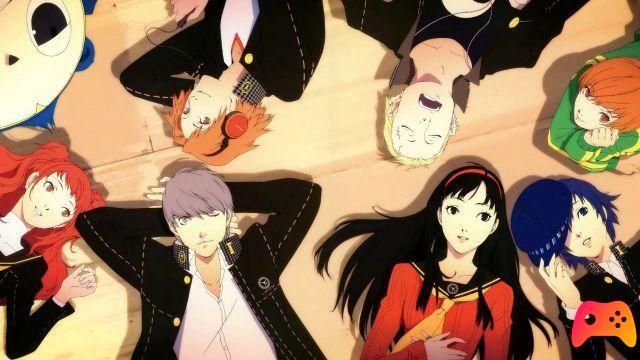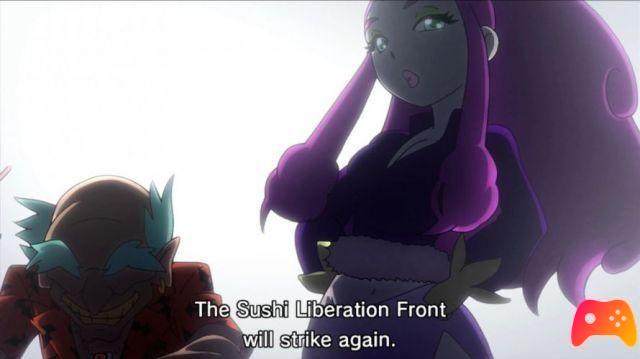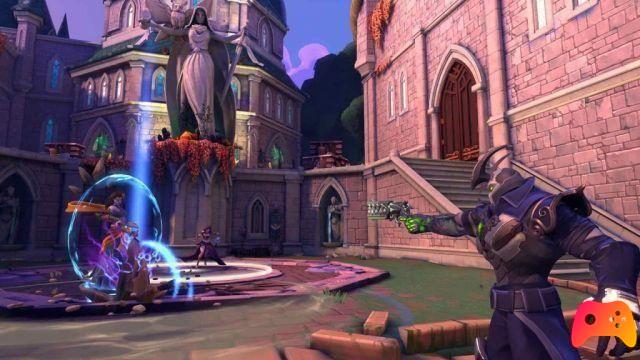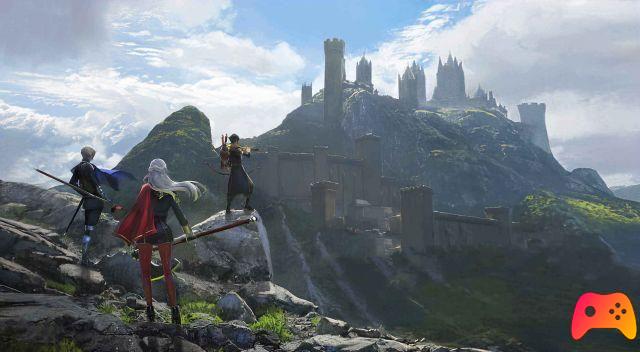
Review for Fire Emblem: Three Houses. Game for Nintendo Switch, the video game was released on 26/07/2019
It's been more than ten years, but finally Fire Emblem is back on a Nintendo main console, after two chapters (and a remake) landed on 3DS, and thus continues its evolution in a balance between the series' stainless gameplay formula and new ones. feature to shape its contours to create an ever new experience.
With Fire Emblem: Three Houses the guys of Intelligent Systems allow us to forge our small army since the adolescence of its components, directly from academic times, when the shadow of war is still only a specter of the past, but inevitably destined to break down again on their lands.
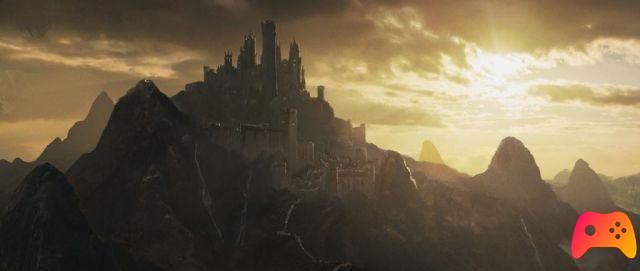
Apparent balance
We are located in the Fódlan, a continent divided into three main nations: theEmpire of Adrestian, Holy Kingdom of Faerghus and l 'Leicester Alliance. They are rivals but at the same time at peace for years, a balance of power administered and guarded by the Church of Seiros, a religious order with an independent army which has its headquarters in Garegg Monastery Think, located in a land exactly in the center between them. As a neutral peacemaker, the Monastery is also the residence of the military academy where the scions of the noble houses of the three nations are educated and trained.
The protagonist of Fire Emblem: Three Houses, whose gender and name we can customize, is the son of a mercenary who once was the captain of the Knights of Seiros, now retired. Father and son will meet again in the monastery, where the Archbishop will ask us to become one of the professors who will have the task of forming one of the three classes corresponding to the three nations of the Fódlan: the Black Eagles of Adrestian, the Blue Lions of Faerghus or the Deer Leicester Gold Plates.
At this point it will be up to us to choose which students to follow, and with them their personal perspective through the events that will follow one another. A story in which the friendly rivalry of the academy will have to give way to much darker and bloody conflicts.
The story of Fire Emblem: Three Houses is divided into two distinct parts: the initial phase that covers the months spent in the academy which acts as a preamble and has the role of introducing us to the socio-political situation of the Fódlan, but above all our students and those of the other classes. The first signs of the crisis are already in the air and on more than one occasion we will clash with characters who are plotting something sinister in the shadows. However, nothing really striking happens until about halfway through the game, when the quiet equilibrium situation will radically change into a real war.. The second part tells of the years of conflict, which will change not only the balance of power of the Fódlan, but above all the protagonists of its destiny: the students of the Monastery, once comrades, now divided by the war.
This double face of the narrative aspect of Fire Emblem: Three Houses is certainly interesting, especially because it allows us to get to know the different protagonists in a relaxed context, to deepen their personalities and the s between them. Despite this, it is also true that in the first part of the game nothing really significant happens, apart from some missions in which we see the villains for a very short time, and which last a very long time (about 20-30 hours) can impatient those who are less interested in delving into the background of the characters and are eager to see more concrete developments in the plot. Fortunately, at the end of the first part, the events take a decidedly more engaging and exciting turn, telling an epic story of power and friendship certainly worthy of the series.
The great strength of Fire Emblem: Three Houses is the ability to choose one of the three possible storylines that will take us through the events. Starting from the intuition had for Fire Emblem Fates (and without breaking the game this time), the authors offer us three complementary paths, each with its characters to become attached to and its different battles to face. Despite the many hours spent finishing the game with one of the classes, the urge to start over by choosing another is really great, and clearly this multiplies the longevity of the title. So get ready to spend tens and tens of hours in the game, and to bless the semi-portability of Nintendo Switch that will allow you to take advantage of every free moment.
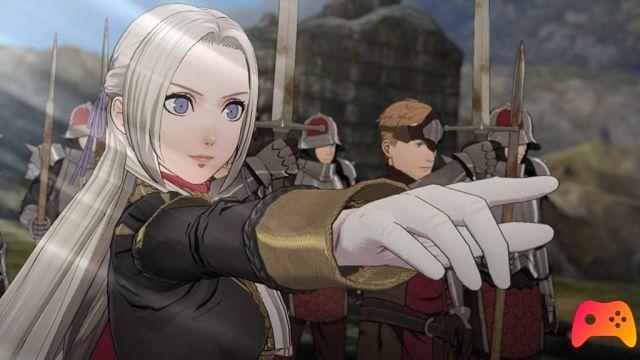
Personal Lesson
The scaffolding that holds Fire Emblem: Three Houses is basically the same as in the previous chapters, with characters to be upgraded not only by experience level but also in disparate War Skills, such as skills with various types of weapons, spells, etc. But now skills can be developed not only in battle, but also through academic education. The Monastery and our role as Professor are at the center of the structural innovations of Three Houses. The pace of game progress is marked in months, at the end of each of which there will be no written exams, but war missions entrusted to us by the Church of Seiros; we will then have about a month to prepare. The midweek days will automatically pass into the academic routine (with some exceptions for particular events), while Sunday will be free and we will be able to act actively. We will then be able to choose whether to embark on battles outside the monastery to carry out secondary missions or random battles to accumulate experience, or to follow seminars by the various teachers present at the Monastery that will automatically increase our war skills.
Among the main choices is to explore the Garegg Mach Monastery as the protagonist Professor for interact with students and undertake different activities to increase their levels of Motivation and Support. Motivation is a kind of “energy for study”, the ability of a student to undergo the personal instruction of the Professor. In fact, every Monday, before the normal weekly cycle of lessons, we will be able to directly instruct some students by consuming their Motivation points to further increase their Skills in a targeted way. For example, if we want one of them to develop bow mastery quickly it will be necessary to increase his Motivation on Sunday and then spend it to increase his level of competence with that weapon. Support, on the other hand, is practically a sort of "personal confidence level" already seen in past chapters that allows for various benefits in battle and development; furthermore, as a consequence of a Level-up of the degree of Support, that student's Motivation will fill up completely, ready to be used to further enhance it. There are several methods to increase the levels of Motivation and Support. While exploring the Monastery it is possible to meet and talk to the different students, bring them back objects that they have lost around or give them gifts appropriate to their respective characters, invite them to eat together, and so on.
JRPG gamers will have noticed that this structure is very reminiscent of modern titles in the Persona series of ATLUS, and in fact the similarities with its elements of social sim are evident. Knowing how to manage the time available and the various educational mechanisms will be fundamental for the growth of the units which we will then have to deploy on the field.
The development system thus designed allows great flexibility for character management. Each of them possesses a personal skill different from all the others, and is clearly naturally inclined for certain roles and skills, but the player in the role of the Professor has all the tools to shape his team as best he likes. Not only that: even if at the beginning of the game it is possible to choose only one class and its components, the rival students are not totally armored and will be willing to go to our side if you improve certain statistics and cultivate a good level of Support with them. . In short, both in terms of individual sympathy and in terms of team malleability, the game allows a truly remarkable flexibility.
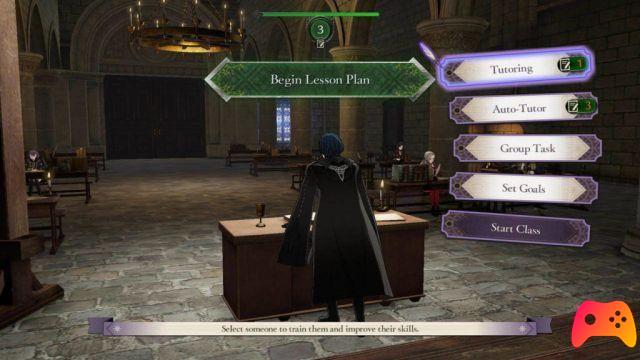
The battle structure has remained roughly the same as its predecessors, with only a few differences. Once again it is possible to choose the game difficulty (experts of the series will do well to set it difficult right away) and whether or not to include the permadeath. Directly from Fire Emblem Echoes Shadows of Valentia the possibility of going back in turns to correct some wrong choices that have put us in a particularly unfavorable situation, perhaps avoiding the permanent death of a character. It was instead abandoned the system of "pairing" of the units: now each fighter remains to himself and can receive bonuses only through the proximity of his companions.
Significant news to the battle system of Fire Emblem: Three Houses are the Battalions, or special troops that we can assign to a character that basically act as extra skills, and depending on the type they can inflict damage without having to suffer the opponent's counterattack, inflict negative statuses or support allies. Not only do they represent a way to customize and make a character less mono-dimensional (for example, it is possible to assign a battalion of wizards to a knight), but they will be fundamental to face particularly powerful demons, which have more energy bars and one shield that we can only break by throwing a battalion charge to them to stun them and thus give us a way to seriously consume their life points.
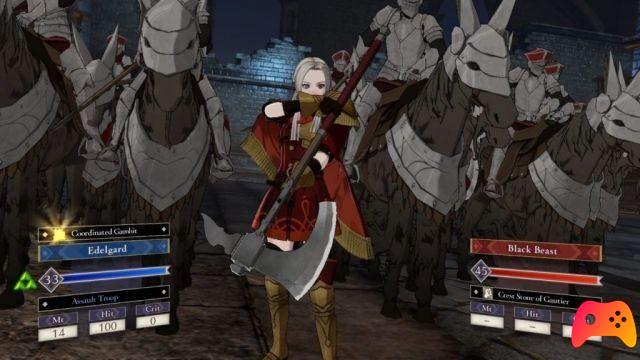
Among the various optional missions that we can undertake from the Monastery there will be some particularly important ones linked to specific characters and which deepen their background. In general, the battles that we will face are in all respects in line with what has already been seen in the past in the series. In some combat maps we will find territorial variants which will force us to change our assets and strategies. For example, in some areas the fog will conceal the presence of enemies until we get close enough to be able to spot them; in others the sand will restrict the movement of all units with the exception of flying and magical ones, and so on.
Apart from these variables, the types of missions have remained the same even in Fire Emblem: Three Houses, and although we had not hoped for a revolution of what still remains a solid structure, the lack of variety of maps and missions left us a little dumbfounded, which joins a general lack of new ideas to mark the advent of a next-generation Fire Emblem.
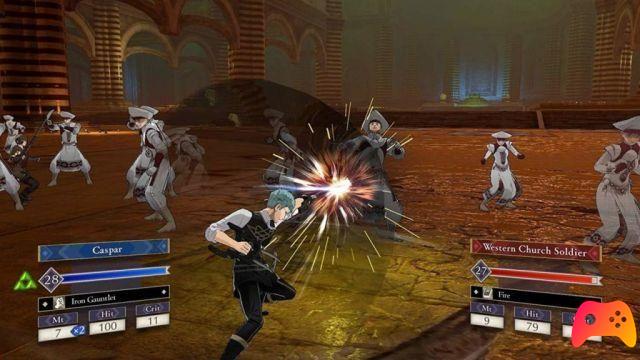
Graphically, the leap made compared to Fates is evident and you can immediately notice it by looking at the polygonal models of the characters during the dialogues, much more proportionate and expressive, but also by their appearance no longer two-dimensional on the battlefield. The contrast with the past is certainly satisfactory, but it must be said that we are not faced with a game that makes the most of the power of Nintendo Switch. Despite the undoubted (but also necessary) steps forward, the level of detail and the animations of the polygonal models certainly do not scream a miracle, as well as the limited possibility of exploration of the Monastery (the only freely accessible setting) or the two-dimensional backgrounds of low quality visible during some conversations between characters.
Although it does not excel from a technical point of view, the artistic choices of Fire Emblem: Three Houses are certainly spot on. Garegg Mach, the place where you will spend most of your time (excluding the fighting) is compelling in its architecture and has a charming atmosphere. Being in a fantasy academic setting structured in rival classes inevitably brings out the impression of being in a sort of medieval Hogwarts, and the likeness is pleasant to hear in the air. Even during the fighting they tried to bring some renewal, making use of the technical support of Koei Tecmo. During their respective attacks, the characters are portrayed side by side with other random soldiers, irrelevant for gameplay purposes, but which give a hint of realism enough not to give the impression of being a small group against an army. Therefore, when an archer scores his attack immediately afterwards we see other darts hitting the same opponent, or by shooting down an enemy the soldiers near him turn and retreat. Shy additions that are still appreciable to make the fights more realistic.
The game soundtrack curated by Takeru Kanazaki (former composer for Fire Emblem Fates and Fire Emblem Echoes: Shadows of Valentia) is simply fantastic, and knows how to involve thanks to the skilful use of strings, percussion and trumpets that mark martial and particularly epic rhythms. The main theme of the game literally entered our brain for how compelling it is and how it is repeated in the most crucial moments. Even the accompaniment song of the standard battles is so catchy and engaging that it never gets tired even after dozens of plays.
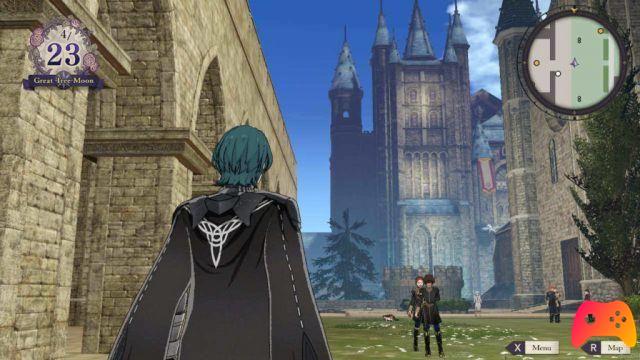
Just as the introduction of Social Links was not appreciated by all fans of the first Persona, it is likely that the new management elements of Fire Emblem: Three Houses will not appeal to all purists, accustomed to the classic succession of battles, as well as not we expect the academic setting to please everyone. The new structure, however, has the advantage of allowing greater personalization of your team, as well as deepening the more intimate side of the characters involved in this story from the triple perspective, which will give you hours and hours of fighting and team management. Although from this chapter we would have expected a greater creative leap, with Fire Emblem: Three Houses the team of Intelligent Systems places another successful title within the saga.
► Fire Emblem: Three Houses is a turn-based-RPG-Tactical game developed by Nintendo Intelligent Systems and published by Nintendo for Nintendo Switch, the video game was released on 26/07/2019




